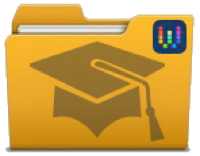Workflow (iOS): Take a Note
24 Feb 2015I continue to find great personal uses for the iOS app Workflow. One of the ones I’ve been experimenting with recently relates to quickly taking contextual notes and adding them into Evernote.
Overview
For many years now Evernote has been my goto reference library for notes of all varieties and as a premium user I find it invaluable in its ubiquity and versatility. One of the tasks I use Evernote for is to capture random notes about things I see and think of. These get dumped into my “Inbox” notebook as a default and I look to develop, tag and move them to another notebook as time permits.
Often my notes would be jotted in, a quick audio recording made or a snap shot taken and placed in a note. However it always proved a little bit pokey to add multiple media types when on the go via my iPhone, but now with the aid of Workflow I’ve got an easier way to get these ideas into Evernote.
Capture What?
There are three primary elements I might wish to capture in a typical ‘inspiration strikes’ kind of note.
- Audio - usually my quickest way of getting a thought captured.
- Image - often it is something I’ve seen that gives me an idea.
- Text - the slowest capture method, but sometimes text can be the quickest way to capture something.
In addition to this I find it useful to know when I captured the note and also where I was. Usually this helps add some extra context. Whilst Evernote can also add things from my calendar (and I have another workflow relating to that) I don’t use information about any current meetings for this workflow as it is very much the random note capture process I’m streamlining rather than capturing a series of meeting actions.
Whilst Evernote offers all of the things I want in its own native app I find that using Workflow to present them to me as more of a process driven capture method speeds up the capture process.
What the Workflow Does
Step 1 - Choose capture type(s)
The workflow starts off by offering the user a list of capture options in a menu. These cover every combination of audio, image and text. I did consider having a multi select list, but when you wanted to capture all three that’s three selections to make. A simple menu with an entry for each combination means all are just one tap to access.
The menu sets a variable called Include to a series of characters. Any option where a photo must be captured will include a “P”. Any option where audio must be recorded will include an “A”. Finally, any option where some text must be captured will include a “T”. So when selecting to capture a photo and audio the Include variable will contain “AT”.
With the Include variable set the workflow can then use a set of “if” blocks to check if the variable contains particular character and then run an appropriate set of actions.
Step 2 - Capture image
Any run that needs to capture an image will offer the user a second option. To capture a new image with the device’s inbuilt rear camera or to use an existing one (including screen shots). The result is then stored in a variable. If the workflow does not need to capture an image then the variable is set to Nothing.
Step 3 - Capture audio
Any run that needs to capture audio will trigger workflow’s built in audio recorder. I set the audio recording to be normal quality as it is usually just my spoken word being captured and the quality is absolutely fine for that. The recording is also set to trigger immediately saving me another tap.
One thing to watch for here is that when the recording is being carried out, that the audio wave on the screen is reacting. I occasionally find that it isn’t. This looks to be an issue with Workflow (which is still quite new for such a complex piece of software) and each time closing the app (double tap the home key and swipe the Workflow app away) and reopening it fixes the issue. I’ve also been unable to run it on my iPad as audio recordings seem to crash it … but it works fine on my iPhone 6 plus which is what I am typically capturing this on.
Tap on the screen to end the recording and it will be saved to another variable. If no audio is to be captured, again this variable is set to be Nothing.
Step 4 - Capture text
Finally any text to be captured triggers the display of a very simple one line text box to capture a small piece of text. I’ve not used this to capture a note yet, but there could conceivably be an occasion where I can’t verbally record a note for myself or where I really want to ensure that I can search for it in Evernote with a unique piece of text later.
Once again the result is stored in a variable and if there is no text to be captured, the variable is set to Nothing.
Step 5 - Capture location
Whenever the workflow is run it captures some details about the current location. The Get Current Location action is run and the result captured in a variable. This is then also passed to the Get Maps URL action and the result of that is stored in another variable.
Step 6 - What time is it?
The workflow then generates the current date time in the following format “yyyy-MM-dd-HH.mm.ss” and, you guessed it, stores it in yet another variable.
Step 7 - Combine the data
The workflow now has a set of variables ready to combine to produce the body and the title of the new Evernote note. It begins by appending the photo and audio variables to a new variable.
The location, the map URL and the text note are then also added as a single block of text to the variable.
Step 8 - Save the note
With the body of the note now held in a variable called Note, the title of the note is set as “Take a Note - “ followed by the date time generated earlier and the Evernote notebook to add the note to is set as “Inbox” (you’ll probably want to amend this). This is all set within the Create New Note Evernote action which saves the new note into Evernote.
Once the upload is complete the application then does one of two things. If the workflow captured an audio note it assumes that it is okay to give audio feedback and will speak the words “Note saved”. If no audio was being uploaded it will simply vibrate to inform the user that the upload is complete.
Wrap-up & Download
So that’s how it works and you’re welcome to take this workflow and tweak it for your own use. Maybe there are some options you would never use or perhaps you want to take multiple photos and add them? Perhaps you just want to add a standard tag to your note? Whatever you choose to do, remember to set the notebook to be the name of one of those in your Evernote account.
If you are on an iOS device with the Workflow app installed, you can tap here to install the Take a Note Workflow.
 Scroll the menu to find all the places to visit
Scroll the menu to find all the places to visit


